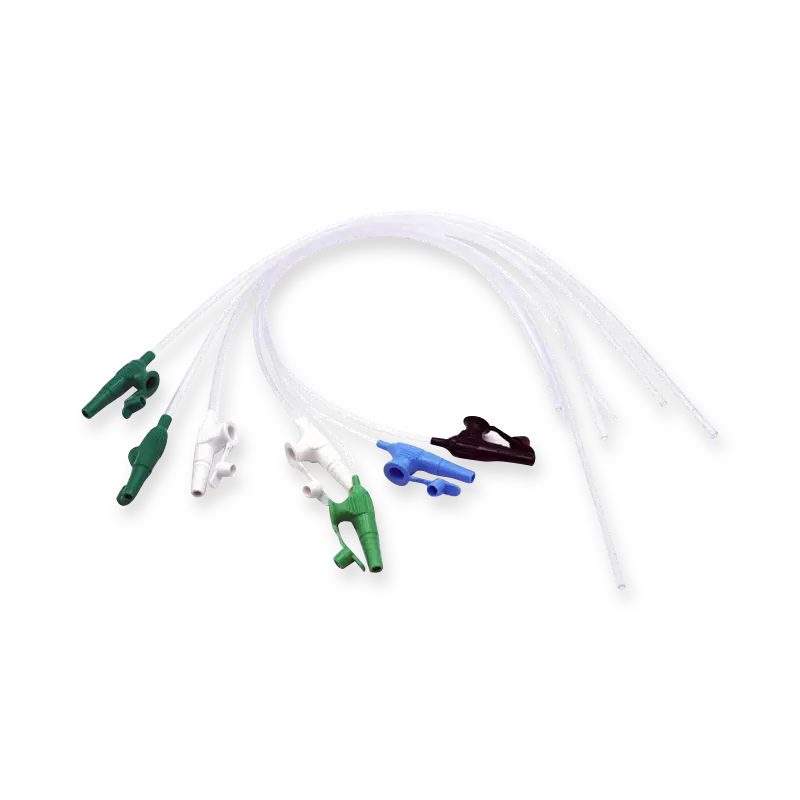TEl: +86-13148388090
Fax:+86-571-88616515
How to choosethe correct size suction catheter
Author: admin / 2025-01-09Are you looking for learning material as not sure how to choose the right suction catheter size? If yes, you've been in the right place. Suction catheters play an important role in emergency, intensive care and anesthesia. To ensure the patient's airway patency and comfort, it is crucial to choose the right suction catheter size. So, how to choose the right suction catheter size according to the patient's different conditions? Bever Medical will share with you the guide for choosing the right suction catheter.

Understanding Suction Catheter Sizes
Suction catheters are defined by two key parameters: outer diameter (OD) and inner diameter (ID). But what do these mean?
Outer Diameter (OD)
This parameter means the overall diameter of the catheter (millimeters). The size of the outer diameter can directly influence the ease of insertion and airflow. If the OD is too large, it can put extra strain on the airway, while an OD that's too small might not effectively clear secretions.
Inner Diameter (ID)
The inner diameter describes the diameter of the catheter's lumen, determining the suction power and drainage capacity. A larger ID can effectively suction more secretions, especially in critically ill patients or after major surgeries.
When selecting a suction catheter, it's crucial to understand these dimensions and tailor your choice to the patient's physiological characteristics and clinical needs.
The Importance of Choosing the Right Size
Suction catheter size plays a great role. If it is too small, it may fail to clear secretions effectively, compromising the patient's breathing. Conversely, a too-large catheter may cause airway irritation, injury, or even complications like airway bleeding or pneumothorax. Moreover, the right size can enhance the efficiency of healthcare workers and simplifies insertion.
How to Choose Suction Catheter Size Based on Patient Age and Condition
Different patient groups require different sizes of suction catheters.
Adult Patients
Adults typically have wider airways, so larger suction catheter sizes are generally needed. Based on height and weight, doctors often select catheters with an outer diameter between 14-16 French (Fr). For patients with tighter airways (like those who are obese or have respiratory diseases), a slightly smaller catheter may be appropriate.
Pediatric Patients
Children have smaller airways, necessitating smaller suction catheters. For infants or very young children, an outer diameter of 5-8 French (Fr) is common. Care must be taken when selecting a catheter, as using one that's too large can harm a child’s airway.
Elderly Patients
As people age, their airways may narrow or shrink, especially in those with chronic conditions (like COPD or asthma). Elderly patients typically require medium-sized suction catheters, generally with an outer diameter of 10-12 French (Fr).
Additionally, specific pathological conditions may also influence catheter selection. For instance, in patients with prostate enlargement or urethral strictures, doctors may opt for catheters that are adaptable and uniquely designed for smooth insertion and use.
Factors to Consider When Selecting Suction Catheter Size
Airway Patency
In some patients (like those with airway tumors or severe infections), the airway may narrow or become obstructed. In these cases, it's essential to consider the catheter's suction capacity and patency.
Clinical Need
In emergencies, doctors might need to quickly and effectively clear secretions, opting for catheters with a larger inner diameter to ensure suction capability. For chronic patients or those in long-term care, smaller catheter sizes are typically more suitable to avoid unnecessary trauma.
Type of Surgery
Different surgeries have varying suction catheter needs. For instance, cardiac surgeries may require larger catheters to clear accumulated fluids, while nasal surgeries might use smaller catheters.
Catheter Flexibility and Durability
When choosing a suction catheter, also take the flexibility and material of the catheter into consideration. Because rigid material may create difficulties during insertion and damage the airway, one that is too soft may lack the necessary suction power.
Takeaway
If are worried about forgetting how to choose the right size suction catheter, it is wise to bookmark this article. When choosing, please consider the patient's age, condition, airway patency, and clinical needs, which help improve treatment effectiveness and reduce complications. If you're looking for high-quality yet affordable catheters, Bever Medical offers a range of suction catheters in various sizes and materials to meet diverse patient needs.



